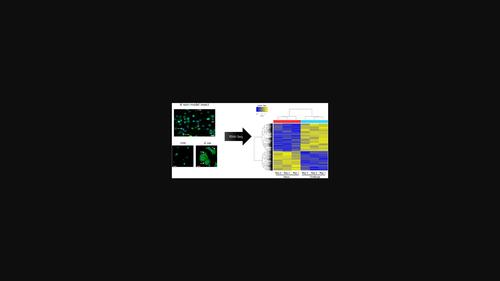当前位置:
X-MOL 学术
›
Arch. Insect Biochem. Physiol.
›
论文详情
Our official English website, www.x-mol.net, welcomes your feedback! (Note: you will need to create a separate account there.)
Immune responses of the Asian onion moth, Acrolepiopsis sapporensis, and their genetic factors from RNA-Seq analysis
Archives of Insect Biochemistry and Physiology ( IF 2.2 ) Pub Date : 2023-07-17 , DOI: 10.1002/arch.22038 Md Tafim Hossain Hrithik 1 , Yonggyun Kim 1
Archives of Insect Biochemistry and Physiology ( IF 2.2 ) Pub Date : 2023-07-17 , DOI: 10.1002/arch.22038 Md Tafim Hossain Hrithik 1 , Yonggyun Kim 1
Affiliation

|
A nonmodel insect, Acrolepiopsis sapporensis, has been analyzed in immune responses. The total hemocytes in the fifth instar larvae were 2.33 × 106 cells/mL. These hemocytes comprised at least five different types and different relative ratios: 47% granulocytes, 26% plasmatocytes, 11% oenocytoid, 8% prohemocytes, and 5% spherulocytes. Upon bacterial challenge, some of the hemocytes exhibited typical hemocyte-spreading behaviors, such as focal adhesion, and filopodial and lamellipodial cytoplasmic extensions. The hemocyte behaviors induced cellular immune responses demonstrated by nodule formation. In addition, the plasma collected from the immune-challenged larvae exhibited humoral immune responses by bacterial growth inhibition along with enhanced phenoloxidase enzyme activity. These cellular and humoral immune responses were further analyzed by determining the immune-associated genes from a transcriptome generated by RNA-Seq. A total of about 12 Gb sequences led to about 218,116 contigs, which were predicted to encode about 46,808 genes. Comparative expression analysis showed 8392 uniquely expressed genes in the immune-challenged larvae. Differentially expressed gene (DEG) analysis among the commonly expressed genes indicated that 782 genes were upregulated and 548 genes were downregulated in the expressions after bacterial challenge. These immune-associated genes included pattern recognition receptors, immune mediation/signaling genes, and various immune effectors. Specifically, the genetic components of the Toll, IMD, and JAK/STAT immune signaling pathways were included in the DEG database. These results demonstrate the immune responses of A. sapporensis larvae and suggest the genes associated with the immune responses in this nonmodel insect.
中文翻译:

亚洲洋葱蛾 Acrolepiopsis sapporensis 的免疫反应及其来自 RNA-Seq 分析的遗传因素
一种非模式昆虫,札幌卫衣草,已被分析其免疫反应。五龄幼虫血细胞总数为2.33×10 6 个 细胞/mL。这些血细胞包含至少五种不同类型和不同的相对比例:47%粒细胞、26%浆细胞、11%类细胞、8%原血细胞和5%球状红细胞。在细菌攻击后,一些血细胞表现出典型的血细胞扩散行为,例如粘着斑、丝状伪足和片状伪足细胞质延伸。结节形成证明了血细胞行为诱导了细胞免疫反应。此外,从免疫攻击的幼虫中收集的血浆通过抑制细菌生长以及增强的酚氧化酶活性表现出体液免疫反应。通过从 RNA-Seq 生成的转录组中确定免疫相关基因,进一步分析了这些细胞和体液免疫反应。总共约 12 Gb 的序列产生约 218,116 个重叠群,预计它们编码约 46,808 个基因。比较表达分析显示,免疫攻击幼虫中有 8392 个独特表达的基因。对常用表达基因进行差异表达基因(DEG)分析,细菌攻击后表达上调的基因有782个,下调的基因有548个。这些免疫相关基因包括模式识别受体、免疫介导/信号基因和各种免疫效应子。具体来说,Toll、IMD 和 JAK/STAT 免疫信号通路的遗传成分均包含在 DEG 数据库中。这些结果证明了札幌蜜蜂幼虫的免疫反应,并提示了与这种非模型昆虫的免疫反应相关的基因。
更新日期:2023-07-17
中文翻译:

亚洲洋葱蛾 Acrolepiopsis sapporensis 的免疫反应及其来自 RNA-Seq 分析的遗传因素
一种非模式昆虫,札幌卫衣草,已被分析其免疫反应。五龄幼虫血细胞总数为2.33×10 6 个 细胞/mL。这些血细胞包含至少五种不同类型和不同的相对比例:47%粒细胞、26%浆细胞、11%类细胞、8%原血细胞和5%球状红细胞。在细菌攻击后,一些血细胞表现出典型的血细胞扩散行为,例如粘着斑、丝状伪足和片状伪足细胞质延伸。结节形成证明了血细胞行为诱导了细胞免疫反应。此外,从免疫攻击的幼虫中收集的血浆通过抑制细菌生长以及增强的酚氧化酶活性表现出体液免疫反应。通过从 RNA-Seq 生成的转录组中确定免疫相关基因,进一步分析了这些细胞和体液免疫反应。总共约 12 Gb 的序列产生约 218,116 个重叠群,预计它们编码约 46,808 个基因。比较表达分析显示,免疫攻击幼虫中有 8392 个独特表达的基因。对常用表达基因进行差异表达基因(DEG)分析,细菌攻击后表达上调的基因有782个,下调的基因有548个。这些免疫相关基因包括模式识别受体、免疫介导/信号基因和各种免疫效应子。具体来说,Toll、IMD 和 JAK/STAT 免疫信号通路的遗传成分均包含在 DEG 数据库中。这些结果证明了札幌蜜蜂幼虫的免疫反应,并提示了与这种非模型昆虫的免疫反应相关的基因。

































 京公网安备 11010802027423号
京公网安备 11010802027423号